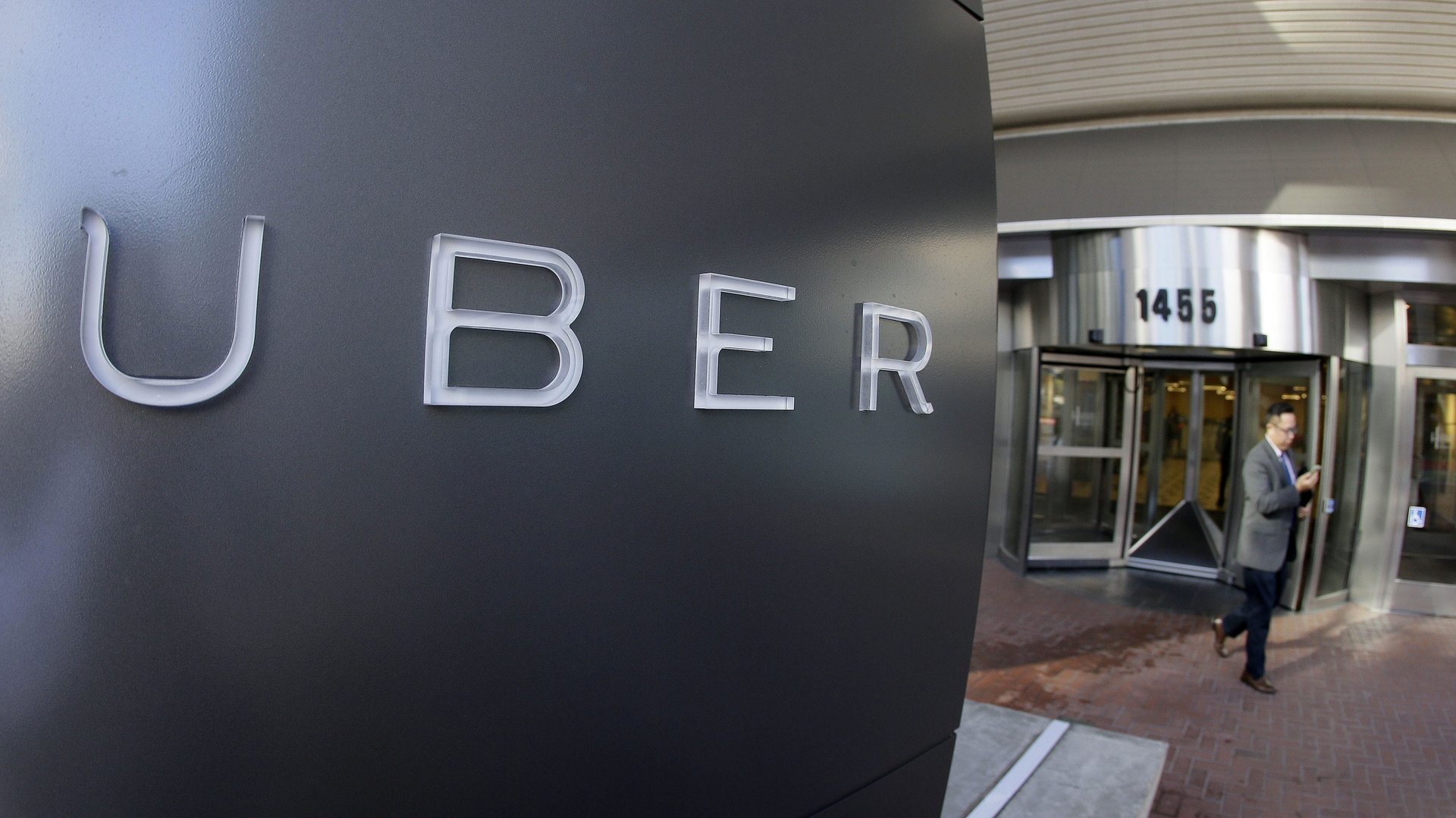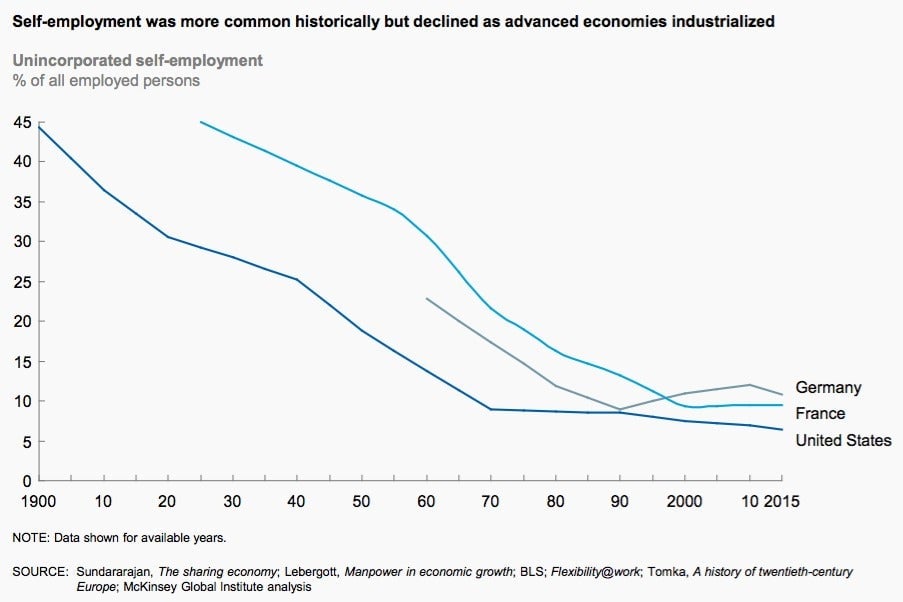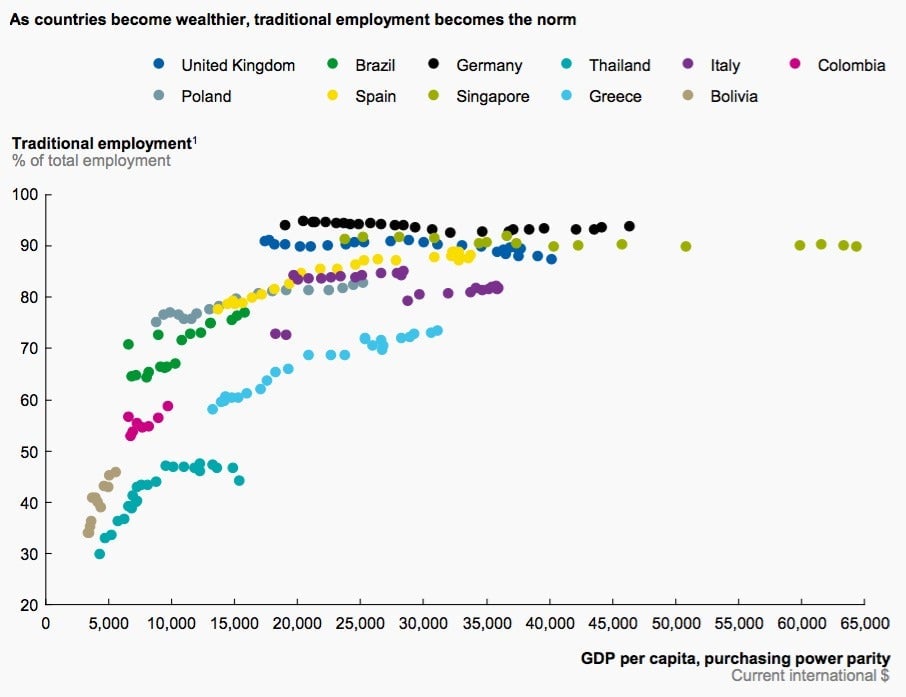The Uber economy looks a lot like the pre-industrial economy
Maybe Uber isn’t that innovative after all.


Maybe Uber isn’t that innovative after all.
A new study from the McKinsey Global Institute (MGI), finds that the “gig” economy model popularized by Uber has a lot in common with the economies of poor countries today, as well as the US and Europe before the Industrial Revolution.
Uber and other “gig” companies like Lyft and TaskRabbit hire their workers as independent contractors rather than full employees. These jobs comes with a lot of flexibility—workers can set their own schedules—but they lack the protections afforded full-time employees of larger corporate enterprises, such as health care and a guaranteed minimum wage. Uber and its digital peers are a small if well-known part of the larger independent workforce, which McKinsey estimates at 20% to 30% of the working-age population in the US and the EU-15, or some 160 million people.
While companies like Uber have been hailed as modern conveniences for consumers, they are proving to be just the opposite for workers. App-based services rely on income inequality and may well be perpetuating the divide between capital and labor. They are also reverting economies to pre-industrial ideas about work.
Historically, self-employment fell as countries industrialized.

And traditional, corporate employment became the norm as they got richer.

Today, self-employment is common in low-income countries, where only about 30% to 40% of adults work as traditional employees, according to International Labour Organisation statistics cited in the MGI report. Independent work is also thriving in Spain, which has suffered from continuously high unemployment. Many of those workers are low-income and stuck in temporary contracts, creating “a two-tiered labor market,” the report notes.
In other words, a burgeoning independent workforce hasn’t historically been a sign of economic progress. In the US, the rise in independent work and the dismantling of a worker safety net has come alongside stagnant median wages and huge losses of jobs, particularly in sectors such as agriculture and manufacturing.
At least for now, though, workers don’t seem to mind. According to McKinsey, 70% of independent workers in the US and Europe take such jobs by choice, either full-time or to supplement income from another job.